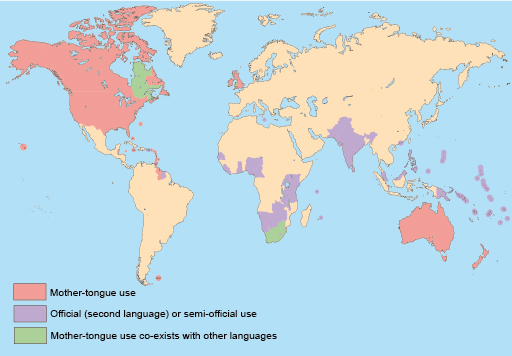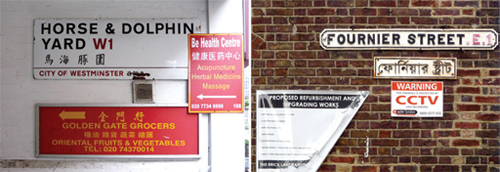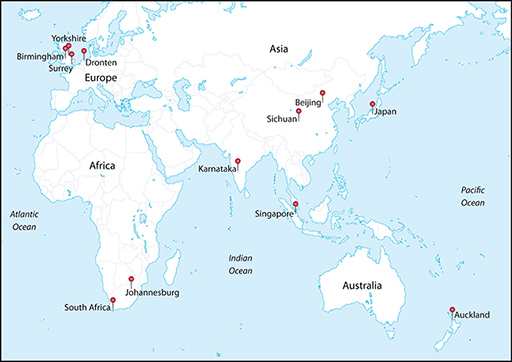English in the world today
Use 'Print preview' to check the number of pages and printer settings.
Print functionality varies between browsers.
Printable page generated Friday, 26 April 2024, 2:01 PM
English in the world today
Introduction
In the last few decades, English has emerged as the pre-eminent language for international communication. It is spoken by more people around the world than any other language, and is regularly described as a truly ‘global’ language. This course introduces you to the role that English plays in the world today, and examines the social, political and cultural factors that have influenced its development. It traces the history of the language from its arrival in Britain in the fifth century AD through to the present day and its status as a language with a truly global reach. It looks at how and why English came to occupy this position, and at what the consequences of its global spread are for the way it’s used and perceived around the world.
This OpenLearn course is an adapted extract from the Open University course U214 Worlds of English.
Learning outcomes
After studying this course, you should be able to:
understand the diversity of English through history and around the world
understand the effect of social and cultural factors on an individual’s use of English
understand the relationship between a person’s linguistic heritage and their sense of identity
understand the ways in which different varieties of English in use around the world are categorised.
The beginnings of English (Part 1)
The English language had been around for about four hundred years before it began to be called English. It first emerged sometime during the fifth century AD, when a number of Germanic tribes from the north of Europe – whom we now refer to collectively as the Anglo-Saxons – arrived in Britain, bringing with them their several indigenous dialects. Over the next few hundred years, as these tribes established roots and began spreading out across the country, the language slowly developed. Yet it was not until the ninth century that the term ‘English’ began to be regularly used to refer to the language (Crystal, 2005, p. 27). English did not become ‘English’ until at least four centuries into its existence.
During this early period of its history, English was just one of many languages spoken on the British mainland. The Anglo-Saxon Chronicles – the earliest history of Britain written in English – begin their account of the country by explaining that:
The island of Britain is eight hundred miles long and two hundred broad. There are five languages, English, Brito-Welsh, Scottish, Pictish and Latin. The first inhabitants of this land were the Britons.
So in the beginning, English was just one language among several; it was a language without a particularly strong identity and with no special status. For the first few centuries of its life, it was very much a local language, spoken by one section of the population of an island off the western coast of continental Europe.
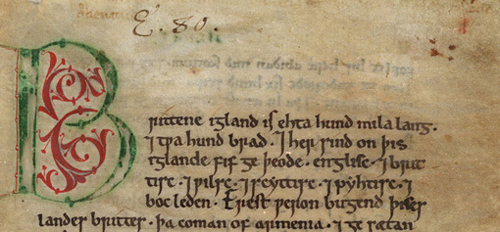
The beginnings of English (Part 2)
Fast-forward one and a half millennia and English is now spread extensively across the globe. Today it is used, in one form or another, by more people, in more areas, and for a wider set of purposes, than any other language. That unnamed language which began life as a parochial dialect spoken by one faction of a group of invading tribes from northern Europe now has a status unmatched by any other language on earth. The question this raises is how and why this dramatic shift took place. What happened to transform English from that small parochial language into the pre-eminent medium of international communication in the modern world? Why has this particular language, from all the other countless systems of speech that the human race has developed throughout its history, risen to such a position of prominence?
The emergence of English as a global language is not the end of the story, though. The fact that English is now established as an important linguistic force in countless communities around the world does not mean that there is little more to say about it. Nor does it mean that those same processes of change and development that brought the language to this position are not still happening.
The beginnings of English (Part 3)
In an essay written towards the end of the twentieth century, the linguist Michael Toolan suggested that the English that is now used as an international language around the world – that’s spoken, for instance, by a Turkish businesswoman communicating with a Korean sales representative at a convention in São Paulo, or by a Finnish diplomat discussing climate change with a Romanian scientist at a conference in Johannesburg – is so culturally removed from the traditional national language of England that it should not be called ‘English’. The name ‘English’, he argues, is no longer appropriate; it no longer reflects the identity the language has in the modern world. He suggests that the language should be renamed. As an alternative, he proposes ‘we call it Global’. English, he contends, at least as it’s used in the context of international communication, ‘is becoming increasingly released from a sense of rootedness in one or more ethnic homelands (whether that is thought of as England, or the Anglo-Saxon world, or the Anglo-American world)’, and so the time is ripe for a strategy of radical renaming (Toolan, 1997, p. 8).
So far, of course, this alternative name hasn’t really taken off. However persuasive Toolan’s arguments may be, people’s actual naming practices have not followed his suggestion. But other scholars have voiced similar qualms, some of which have been highly influential. The linguist Braj Kachru, for example, has suggested that because ‘English now has multicultural identities … [t]he term “English” does not capture [the] sociolinguistic reality’ of the language (Kachru, 1992, p. 357). Instead, he suggests that the plural form ‘Englishes’ should be used. It is no longer possible to speak of a single English language, he contends; around the world there are now several different varieties of English being spoken, each of which is distinct enough to be accorded the status of a separate language. So while Kachru doesn’t go quite as far as Toolan in suggesting that a completely new name is required, he still feels that a fundamental reconceptualisation of the language is necessary.
At the beginning of the twenty-first century, and despite its emergence as the international language of the present time, the status of English is, in certain respects, no more settled than it was at any previous stage in its history. In addition to the question about how English has emerged to occupy its current prominent position in global society, we can therefore ask what it is about the nature of the language in the world today that leads scholars like Toolan and Kachru to make such radical suggestions about the need to change the very name of the language. If people were to adopt Toolan’s suggestion the present discussion would be about the pre-history of Global rather than the second millennium of English. So are suggestions such as these from Toolan and Kachru entirely fanciful? Are they ultimately simply misguided approaches to the subject? Or do they actually identify some underlying truth about the state and status of English in the world today?
This unit takes a look at this group of questions. In doing so, it will introduce you to examples of the variety and diversity of the English language, both as it exists around the world today and as it has developed through history. We shall look at what counts as English today and how the diversity of the language reflects its social history. In addition, we will examine the roles that English plays in people’s lives, and consider why it is that debates about the language, and about how people use the language, can sometimes be highly controversial. We’ll begin, though, by asking a simple, but fundamental, question: what exactly is the English language?
What is English? (Part 1)
It seems sensible to begin an exploration of the English language by determining what we mean by ‘English’. If we want to study its development, its use and its status, it’s worth clarifying exactly what it is. From one perspective, of course, this may seem a rather empty task. Given that you are reading this course – and are therefore presumably a fluent English reader – English is very likely to be almost as integral a part of your life as the air you breathe. You probably get on perfectly well on a day-to-day basis without ever having to reflect on what exactly comprises the language. It’s what you’re reading now. If you live in an English-speaking country, it’s probably what you use on a daily basis to converse with your friends, colleagues and family. In other words, speaking and reading English is something you just do. You may have the odd argument with people about certain aspects of English usage (‘Is it okay to say My sister and me had an argument about correct grammar?’), or may occasionally consult a dictionary to check the meaning or spelling of an unusual word (‘What does deontic mean?’; ‘When is it complement and when is it compliment?’). But as an expert speaker of the language, you can use English without ever needing to be able to give a scientific definition of what it is – just as you can breathe without needing any knowledge of the chemical constituents of air.
Activity 1
For the purposes of this introduction, spend a few minutes writing down a short definition of what you understand by the ‘English language’. Imagine you’re defining the language to someone who has no conception of what it is: how would you sum it up in a few sentences?
Comment
You may well have started your definition by saying that English is the language spoken in England. This is how Dr Johnson defined it in his dictionary of the English language, composed back in the mid-eighteenth century:
ENGLISH. adj. Belonging to England; thence English is the language of England.
Of course, as noted earlier, in today’s world, English is much more than this. English has spread extensively in the two-and-a-half centuries since Johnson’s time. Modern dictionaries mostly augment Johnson’s definition by adding something about the global scope of the language. The Chambers Dictionary (11th edition), for example, defines it as:
A Germanic language spoken in the British Isles, USA, most parts of the Commonwealth, etc.
while the Oxford English Dictionary extends this slightly further:
Of or relating to the West Germanic language spoken in England and also used in many varieties throughout the world.
As we can see, these definitions all concentrate on a number of key elements – and your own definition may well have focused on some or all of these as well. These elements are: the communities with which the language is most associated (English is the national language of the UK, the USA, etc.); its history (i.e. being of Germanic origin); and the way it’s now used in various places around the world. In other words, all these definitions link the language with the people who speak it now or who spoke it in the past. As such, they’re all social definitions of the language – describing it not in terms of the structure it has (they don’t mention, for example, that it predominantly uses a subject-verb-object word order), but in terms of the communities who use it and – importantly – who identify with it. That’s to say, the language doesn’t exist as an abstract entity out there in the ether. It’s something people actually use; something they both speak and write/read (although these definitions mostly privilege the notion of speaking). And it’s something which plays a significant role in their lives. For this reason any investigation into the language will involve an investigation into the social and historical context in which the language flourishes. In other words, when studying the language we also need to study the people who use the language – we need to study how they use it, why they use it and what they think about it.
What is English? (Part 2)
Before moving on to a discussion of the issues discussed in the Comment section, let us first pursue the definition of the language in a little more detail. In textbooks on the subject, it is common practice nowadays to add statistical information about how many people in the world speak the language. Latest estimates suggest that English is currently spoken by between 1500 and 2000 million people, in hundreds of countries, and operates as the main form of communication in important domains such as global business and science. It is precisely because of statistics such as these that some people feel the language has developed in such a way that, conceptually, it is now a quite different entity from its pre-globalised incarnation.
We need to be a bit careful, however, when we make assertions about English using figures like these. While statements of this sort may seem fairly straightforward in one respect, there are a number of hidden issues in the way they are phrased which can complicate the picture. For example, what do we actually mean when we say that ‘English is spoken by almost two billion people in the world today’? What counts as ‘English’ in this context? And who qualifies as having the competence to be a ‘speaker’ of it? Is the English that is spoken in a town on the south coast of England the same as that spoken on the north island of New Zealand or in the centre of Singapore? And if there are significant differences between the way it is spoken in these places, at what point do we say that they are different varieties of the language, or that perhaps they are actually different languages? And does a ‘speaker’ of the language need to have perfect fluency in it? Does someone learning the language count as a ‘speaker’? And finally, is there any significance in the fact that these statements privilege speaking over writing? Should we consider spoken English and written English in the same way, or are there important differences between them which mean we should view them as distinct entities?
Once we start scrutinising some of these issues and concepts we can see that a statement such as ‘English is spoken by almost two billion people in the world’ is an abstraction, and one which raises almost as many questions as it answers. So rather than talk only in abstractions, let us consider some concrete examples of the use of the language around the world in an attempt to determine more closely what counts as English, and who qualifies as an English speaker.
What is English? (Part 3)
Activity 2
Have a look at the three passages below. They are all excerpts from poems or songs. Which of them look recognisably like ‘English’ to you? How much can you understand of each of them? (In each case, the original is given first, followed where necessary by a translation into standard British English.)
Excerpt 1
As they was a-ridin’ back to camp
A-packin’ a pretty good load,
Who should they meet but the Devil himself,
A-prancin’ down the road.
Sez he, “You ornery cowboy skunks,
You’d better hunt yer holes,
Fer I’ve come up from Hell’s Rim Rock,
To gather in yer souls.”
Sez Sandy Bob, “Old Devil be damned,
We boys is kinda tight,
But you ain’t a-goin’ to gather no cowboy souls,
‘Thout you has some kind of a fight.”
So Sandy Bob punched a hole in his rope,
And he swang her straight and true,
He lapped it on to the Devil’s horns,
An’ he taken his dallies too.
Excerpt 2
Wark’s dattin a ill-trikkit dug,
Unbiddibil ay, fir aa du roars.
Hit winna byd, hit nivir faetchis.
an du winds up kaain aa.
An luv, wiel hit’s a haaf-wyld kat
Du mebbie maets, bakk an foar.
Hit’ll tak dy kloo an ryv dy sokk,
Till du shæsts da bæst awa.
Naen firby a tøtak’r sænt
Wid aks da pær ta ly tagiddir.
[Work is such a mischievous dog
which never does as it’s told no matter how loud you shout at it
It won’t stay, it won’t fetch, and you end up herding the flock yourself.
And love, well it’s a half wild cat
you feed occasionally.
It makes off with your ball of wool and tears your knitting in pieces
so you chase the creature away.
Nobody except an idiot or a saint
would expect the two of them to lie down together.]
Excerpt 3
So I called and called sampai you answer
You kata “Sorry sayang. Tadi tak dengar.
My phone was on silent, I was at the gym”
Tapi latar belakang suara perempuan lain
Sudahlah, sayang, I don’t believe you
I’ve always known that your words were never true
Why am I with you? I pun tak tahu
No wonder lah my friends pun tak suka you
[So I called and called until you answered
You said, “Sorry darling, I didn’t hear you
My phone was on silent, I was at the gym”
But in the background was another woman’s voice
Enough darling, I don’t believe you
I’ve always known that your words were never true
Why am I with you? I really don’t know
No wonder even my friends don’t like you]
Comment
The first excerpt is from a ‘cowboy poem’ from the Arizona region dating from the early part of the twentieth century by Gail I. Gardner. It tells the story of two cowboys who run into the devil on their way home from a bar. You probably found it almost all intelligible, although there are one or two dialect words (some of them related specifically to their profession) which might be a little obscure. ‘Dally’, for example, refers to a method of winding a rope around the saddle; while ‘ornery’ is originally a colloquial pronunciation of ‘ordinary’, and means ‘cantankerous’ or ‘mean’. There are also a few distinctive grammatical constructions, such as ‘you ain’t a-goin’ to gather no’, which aren’t common in standard English, although similar constructions do still occur in some contemporary colloquial forms of the language.
The second example is in Scots, the traditional Germanic language spoken in Lowland Scotland, the Northern Isles and parts of Ulster. Along with Gaelic and Scottish English, this is one of the three main languages spoken in Scotland. It has its roots in the Anglo-Saxon dialects which arrived on the British mainland in the fifth century, so it’s related to English but has developed mostly independently. Some people consider it to be a dialect of English, while others regard it as an entirely separate language. These stanzas are from a poem called ‘Varg’ by the contemporary poet Robert Alan Jamieson. As you can see, although some words are obviously close cousins of modern standard British English (e.g. ‘wark’ = work; ‘luv’ = love), for the most part it’s quite different. And even these words which sound similar when spoken, are spelt in non-standard ways. It also includes some characters such as ø and æ which aren’t used in modern standard British English. So unless you’re a Scots speaker, you’d probably have difficulty understanding it without the translation.

The third example is from a song titled ‘Kantoi’ by the Malaysian singer Zee Avi. This is in what is colloquially known as ‘Manglish’, a blend of English and Malay. In Malay, this type of language use is also known as bahasa rojak, which means ‘mixed language’. Such mixed or ‘hybrid’ languages are quite frequent around the world. But they’re also often quite controversial, and are viewed by some as being sloppy or incorrect uses of ‘proper English’. In 2006, for example, the Malaysian government banned the use of bahasa rojak on television and radio, saying that it was adversely affecting people’s proficiency in both standard English and Malay (The Star, 2006). On the other hand, many people consider it to be a distinctive aspect of Malaysian culture and, when used in songs such as this, see it as a way of expressing a unique cultural identity.
What is English? (Part 4)
So what do these different examples in Activity 2 tell us about the nature of English around the world? One of the points I hope they illustrate is that the language is very diverse – that in different communities it has developed in such a way that its form is noticeably different.
You may feel, however, that some of the examples above are not necessarily ‘real’ English at all. Manglish, for instance, can be thought of as a mixture of English and a quite separate language. And while modern Scots and English developed from a common ancestor, Scots is now often viewed as a distinct language (although this decision is as much a political issue as it is a linguistic one). As I mentioned above, in these two cases there is a great deal of controversy about the status of these as independent or legitimate languages. So were you to make the argument that neither of them are really English at all, you wouldn’t be alone in doing so. The question that follows from this, though, is at what point do we decide to call these varieties a different language? At what point are they no longer ‘English’? Is the Arizonan example also a different language? Or is it similar enough to standard English that it should still be called English? In other words, where does the tipping point come? Given the fact that English is being used on an everyday basis in these diverse forms around the globe, how does one decide what counts as the core of the language? Is there a central version of the language which we should think of as authentic English? Or are each of these varieties equally valid systems of linguistic expression which just happen to be different? We can start to answer these questions by looking at the ways that languages exist in the world, and the distinctions that are made in describing them.
Languages, varieties and dialects
So far I have been discussing what counts as the English language – but in doing so I have introduced a number of related concepts such as variety, dialect and accent, which have been used to distinguish between certain different aspects of the general phenomenon we are calling English. Before we go any further, it is worth clarifying the differences between these various concepts, and how exactly they are used in language studies. It is easiest to define them in relation to one another, as they are used to highlight different systematic patterns in the way language manifests itself in society. Of the three, variety is the more general term and is used to refer to any distinct form of a language. It is also more neutral than the others which – as I shall discuss later – can be used to suggest that one form of a language is more prestigious or legitimate than another.
Dialect then refers specifically to a language variety in which aspects of the vocabulary and grammar indicate a person’s regional or social background. For example, the Geordie dialect is the distinctive and systematic use of certain grammatical and vocabulary features that are associated with the population of Newcastle and the Tyneside region. Standard British English is itself considered a dialect by linguists, indicating a speaker’s social origin. This is contrasted with the concept of accent, which refers specifically to differences in pronunciation. So a New York accent refers to the distinctive and systematic pronunciation which is associated with the population of the city of New York. Both the Geordie dialect and the New York accent could be described as varieties of English, as could Australian English or Hong Kong English. These latter two examples would usually be referred to using the more general term variety rather than dialect because they are associated with large-scale or autonomous communities, whereas the communities of Newcastle or New York are part of the wider populations of the UK and the USA respectively.
The dividing lines between the concepts of a language, a variety and a dialect are not absolutely clear-cut however. As noted earlier, one of the issues at the heart of English language studies at the moment is how different varieties are perceived, and how they should be referred to. To refer to something as a language rather than a dialect is to afford it more status. That is to say, if something is viewed as a language in its own right, it is accorded a greater respect than a dialect is. For this reason, in cases where the communities using the variety have clear political and geographical boundaries and distinct institutions, and perhaps also have established literary or cultural histories, the variety is more likely to be accorded the status of a language in its own right. The example that is often given to illustrate this is the relationship between Swedish and Danish. These are linguistically very similar to each other in their spoken form (so much so that they are mutually comprehensible), but are nonetheless thought of as different languages because they are associated with different nation states. So a question which often arises when considering the nature of English around the world is whether certain varieties are distinct enough from both a linguistic and a political point of view to qualify as different languages. To put it another way, is English a language which, because of its global spread, has several different varieties around the world – or is there now a family of English languages (McArthur, 1998)?
English through history (Part 1)
We can see the difficulties in categorising languages and varieties by looking at the way English has changed throughout history. Just as we can ask whether different geographical varieties can be considered the same language, so we can ask to what extent modern-day English – the English you are reading now – is the same language as that introduced to the British Isles one and a half millennia ago.
Activity 3
Have a look at the following passage, which is written in Old English and dates back to the late tenth century AD. If you came across this passage with no introduction, do you think you’d recognise it as English? Can you understand any of it? While reading it through, make a note of any words that you recognise:
eac swylce seo næddre wæs geapre þonne ealle þa oðre nytenu þe God geworhte ofer eorþan. and seo næddre cwæþ to þam wife. hwi forbead God eow þæt ge ne æton of ælcon treowe binnan paradisum.
Comment
At first glance this might seem entirely incomprehensible to you. There are only five words in the passage which have a form which is the same as modern standard British English. These are: God, and, to, wife and of. There’s at least one other word which resembles a modern English word: paradisum looks a little similar to paradise. But other than that the words mostly look distinctly alien, and some of them even include letters which are no longer part of the alphabet we use for modern-day English.
Now let’s look at another passage from approximately four hundred years later. This is in what’s known as Middle English, and was written around the late fourteenth century. How much of this passage can you read?
But the serpent was feller than alle lyuynge beestis of erthe which the Lord God hadde maad. Which serpent seide to the womman Why comaundide God to ou that e schulden not ete of ech tre of paradis.
As you might have noticed, both these passages are translations of the same section of the Bible, namely Genesis chapter 3, verse 1. The Middle English version is much closer to modern-day English, and you were probably able to read a great deal more of it than of the Old English version. However, there are still a few features which differ from the language we now use. For example, the character (known as ‘yogh’) is used in place of a y. Also, the spelling of many words is rather different from how it is today. For instance, in the first line the word ‘living’ is spelt lyuynge (y is used instead of i, and u instead of v), and the word ‘beasts’ is spelt beestis. Some of the vocabulary is also no longer regularly used in contemporary English. The word ‘feller’ in the first line, for example, means ‘crueller’ or ‘more ruthless’. It was still to be found in Shakespeare’s time – for example, in the phrase ‘this fell sergeant, Death, is swift in his arrest’ in Hamlet (5.2.341) – but is not in common usage today (except in rather specialised contexts). All in all, though, you’d probably identify this as being English.
Finally, let’s look at two more translations of the same passage. The first is in Early Modern English and dates from the seventeenth century. This is, in fact, a passage from one of the most renowned translations of the Bible: the King James or Authorised Version of 1611. The second is in Modern English, and was translated in 1961.
Now the serpent was more subtill then any beast of the field, which the Lord God had made, and he said vnto the woman, Yea, hath God said, Ye shall not eat of euery tree of the garden?
The serpent was more crafty than any wild creature that the LORD God had made. He said to the woman, ‘Is it true that God has forbidden you to eat from any tree in the garden?’
The Early Modern English version is closer still to present-day English, although there are still a few features which mark it out as archaic. For example, nowadays ye meaning ‘you’ is only found in certain dialects, and is no longer used in standard British or American English.
English through history (Part 2)
Before going on to discuss what conclusions we can draw from the way the language has changed over the years, let’s have another look at the first translation again and see if we’re able to recognise more similarities between it and the others than might have been apparent at first glance. It will help if you know that the character þ, known as ‘thorn’, is used for the sound th in words such as thin; that ð, known as ‘eth’, is used for the sound th in words such as that; and that æ, known as ‘ash’, is used for the vowel sound in words such as nap. If you compare the words in this translation with the equivalent words in the other translations – and if you try speaking them out loud – you may well find that you’re able to read much more than you originally thought.
eac swylce seo næddre wæs geapre þonne ealle þa oðre nytenu þe God geworhte ofer eorþan. and seo næddre cwæþ to þam wife. hwi forbead God eow þæt ge ne æton of ælcon treowe binnan paradisum.
It’s not possible to work through the passage word by word here, but I’ve highlighted a few words which we can scrutinise in a little more detail:
- From looking at the later translations, you can probably see that næddre is in the equivalent position to ‘serpent’. If you separate the first letter from the rest of the word, you’ll perhaps be able to identify a connection. The meaning has changed somewhat – the Old English word was used to refer to snakes generally, whereas the modern word is used for a particular type of snake – but the Old English word is the original form of the modern word ‘adder’.
- Moving on to oðre, if we replace the ð with a th, we can recognise this as the word ‘other’.
- A similar shift in spelling conventions can be seen in the word cwæþ, where we now use qu instead of cw. If we then substitute th for þ in this word, we end up with something which would be pronounced ‘quoth’ – which we still have in the modern form of ‘quote’.
- In the case of the word hwi, if we simply reverse the first two letters of the word we get modern-day ‘why’.
So we can see that there is indeed a fair amount of continuity between Old English and Modern English, albeit that surface features such as spelling conventions have changed quite considerably.
It’s also worth noting that one of the words we were able to identify from the very beginning – ‘wife’ – actually has a slightly different meaning in this first translation from its modern sense. In all the later translations of the passage it’s given as ‘woman’. This is because the word’s meaning has narrowed since the tenth century. Nowadays we use ‘wife’ specifically to refer to a married woman, whereas back in the centuries of the first millennium it simply meant ‘woman’.
So in conclusion, we can see that the language has changed considerably over the last thousand or so years. It has changed in terms of its lexis (vocabulary), its orthography (spelling) and its semantics (meaning). And, although we haven’t commented on it here, it’s also changed in terms of its syntax (word order). At the same time, however, we can still discern a very definite line of continuity back through all the passages, which justifies us in referring to them as being instances of a single developing language.
English through history (Part 3)
One of the reasons for the change that has happened to English over the centuries is that, since its very beginnings, English has always been in contact with other languages. The influence from this contact can be seen most clearly in the way that English is full of what are known as loanwords. The term loanword, or borrowing, is used to refer to an item of vocabulary from one language which has been adopted into the vocabulary of another. The process is often the result of language contact, where two or more languages exist in close geographical or social proximity. The dominant language often absorbs new items of vocabulary, either to cover concepts for which it has no specific word of its own, or to generate a slightly different function or nuance for concepts for which it does have existing words.
Some loanwords retain their ‘foreign’ appearance when they are adopted, and people will often then use them specifically for the sense of exoticism that they impart. One can talk of a certain je ne sais quoi, for example, or of a joie de vivre when speaking English – in both cases invoking images of French culture to enhance the meaning of what is being communicated. Other loanwords, however, become completely naturalised, until speakers of the language no longer notice their ‘foreignness’ at all. Below is a short selection of words of foreign origin which are in use in modern-day English. As you can see, they come from languages from all parts of the globe.
| freckle | from the Old Norse freknur, first recorded in English in 1386 |
|---|---|
| steak | from the Scandinavian, steik, 1420 |
| bamboo | from the Malay, bambu, 1563 |
| barbecue | from the Spanish, barbacoa, ‘a framework of sticks set upon posts’, 1697 |
| ketchup | from the Chinese (Amoy dialect), ketchiap, a sauce, 1711 |
| ghoul | from the Arabic, ghul, an evil spirit, 1786 |
| dinghy | from the Hindi, dengi, 1794 |
| pyjamas | from the Urdu, paejamah, 1801 |
| cafeteria | from the Spanish, 1839 |
| tycoon | from the Japanese, taikun, meaning ‘great lord’, 1857 |
| rucksack | from the German, 1866 |
English through history (Part 4)
The extent to which English is made up of words of foreign origin was satirised during the diplomatic row between the United States and France over support for the Iraq war in 2003. The newspaper article below plays on the idea that some factions within the United States were so displeased with the French for not offering support for the war that they tried to remove all influence of French culture from their everyday lives.
If the journalist had been even more rigorous with the linguistic analysis, he or she might also have put a line through level, percentage, cultural and captives, all of which have their etymology based partly in French. The point is well made though, that if we wish to remove all French influence from English we have to step well back into the history of the language. In the article, this earlier form of English is symbolised by the popular twelfth-century song, Sumer is icumen in, which appears a great deal more ‘foreign’ to us now than many of the loanwords that have become part of our vocabulary.
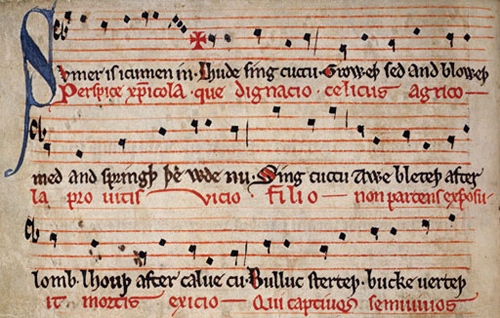
For the time being, the point to make is simply that English has, over its lifetime, absorbed influences from countless sources – and so just as English is now a presence in diverse contexts all across the globe, so diverse contexts from across the globe also have a presence in the language itself.
Timeline of the history of English
Activity 4
Click on the link below to see an interactive timeline of the history of English from its earliest beginnings up until the 21st century. The Help button at the top of the timeline gives an explanation of how to use it. Take the dates at which the four Bible translations we looked at earlier were written (i.e.: circa 980; circa 1380; 1611; and 1961), and explore the events that were going on in the development of English at that time.
You will need to either open the link below in a new tab or window, or use the back button on your browser to get back to this page after you have finished exploring.
Who speaks English? (Part 1)
History is not simply about the passage of time, of course. It is what people do, and the changes that occur in society as a result of people’s actions over time. The history of English can therefore be seen as a record of the changes that have occurred in the populations of those who speak the language. When two languages come into contact, what actually happens is that two communities who speak different languages engage with each other, and the nature of that engagement will determine how the languages influence one another. In other words, it is important when we study English not to forget that what we are actually studying is the language as it is and was used by real people.
I remarked earlier that there is a problem in talking about statistics such as those which say that English is spoken by almost two billion people the world over because they make large generalisations about the nature of the English involved, and the relationship that people have to the language. Such statistics can never fully represent the diversity of experiences that speakers of the language have, either about whether they feel they are ‘authentic’ English speakers or about what they themselves understand English to be. In this section, therefore, I shall consider the role English plays in the lives of people in various parts of the world, and look at how the opinions people hold about the language are related to their personal histories, to the histories of their communities and to their interpretations of the history of the language.
Who speaks English? (Part 2)
Activity 5
Language plays a very important part in people’s identities, and in this activity I’d like you to reflect on the role that your own experiences with English have played in your life. What is your own ‘personal language history’? Spend a few minutes thinking about the questions below. In the discussion that follows we’ll look at extracts from a selection of other people’s reflections, and at how their experiences of English relate to their own identity.
- What languages or dialects were you exposed to when you were growing up?
- Who had the most influence on the language you learnt as a child?
- How did your education affect your attitudes to language? Were there any experiences related to language from your school days which have left a strong impression on you?
- How have the activities you’ve engaged in since school (e.g. work, family life, pastimes) affected your language use?
Comment
Here is a short selection of extracts from English speakers from around the world who were asked the same questions. The first extract is from a woman who was born and brought up in Birmingham in the UK. She reflects here on her time since university and the influences on her use and perception of language during this period of her life:
I went to University in Swansea and for the first time was first made aware of my ‘English’ (and apparently ‘posh’) accent. My first job after leaving was in the North East of England, and here I was perceived (again, for the first time) as a ‘Southerner’. In neither place was anyone able to place my place of birth from my accent. I think what I noticed most was that people made assumptions about my socio-economic background purely on the basis of my accent (or perceived lack of local accent) and saw me as ‘middle-class’ which was not how I saw myself. Since then, I have taught in various primary schools, mainly in Birmingham, where I am aware of my responsibilities of being a language role model, particularly where pupils are new (or relatively new) to English. Though I am back on home ground (in fact, teaching at the school I first attended), people still can’t tell where I come from!
The second excerpt is from a man who was born and brought up in Iran but now lives in Ontario, Canada. His native language is Farsi. In between his childhood in Tehran and his current life in Canada, he also spent some time living in the UK:
I was educated in a mixed Farsi and English language school until grade eight. My father was keen to send me to England for my education. In those days a lack of university places and the annual university entrance competition were a major concern for parents. In 1978, just before the Iranian Revolution, I started my education at a college in Bedford, England. My minimal English and studying this subject further helped me to get through my course work every year. After finishing my O-Levels and A-Levels, I went to Liverpool University. I decided to study Structural Engineering with a view to going back to Iran one day.
I had to learn a lot of engineering professional jargon like ‘stress’, ‘strain’, ‘fatigue’, ‘moment’, ‘shear’, ‘curvature’, etc. With my solid English background, I could put together the basic vocabulary and, without this, my understanding and learning of the Structural Engineering concepts and syllabus would have been impossible.
After receiving my Masters degree in 1992, I found a good position at the International Institute of Earthquake Engineering in Tehran, Iran. After 14 years I was returning with not much Farsi ability to write at advanced levels. It took me almost one year to read and learn the engineering terms in Farsi. But I found out in some cases that the technical words were taken from the engineering literature in English.
The final extract is from a woman currently living in London. She writes here of the periods of her life spent in both her birthplace, Taiwan, and the UK:
I was born in Taipei, Taiwan and brought up with Mandarin Chinese. I first moved to London with my family when I was ten years old, knowing my alphabet up to K. The only two English words I knew were ‘apple’ and ‘hat’, which I pronounced more like ‘epple’ and ‘het’ due to the more dominant American influence in Taiwan.
After I graduated from my Fine Art degree, I went to Taiwan to get reacquainted with Chinese culture. While I was there I worked at an art gallery, an English language school and a bilingual newspaper. Most of my western friends were American. I was shocked to be labelled British. In order to work at the language school in Taiwan, I had to adapt my accent moderately so that kids didn’t fail their KK (the phonetic system used there). My accent was all mixed up. I remember being mistaken for being an Australian when I spoke to a British guy! I hated listening to the local American station and clung to BBC World Service for my sanity.
I married an American and then moved back to the UK. I found work in East London at a university library. For the first time in my life, I became fascinated by the different accents I was coming across. Some of my colleagues are of proud, East End, working class origin, some are from Essex, some are from the Midlands, the North, from Scotland, from Italy, Bulgaria, Kenya … Here we are in multicultural Britain! Not to mention the new slangs used by colleagues who are a decade or so younger than me, or the foreign students we encounter from all over the world!
Who speaks English? (Part 3)
Activity 6
Further examples of the personal language histories of people from around the world can be heard in the short video interviews below. The map indicates the places in which the interviewees were born – although as you will hear, many of them have moved around the world. Choose five or six of the interviews and, while watching them, consider again the questions about language and identity from above. As you are watching, compare your own answers with those given in the interviews.
Benjamin Zephaniah
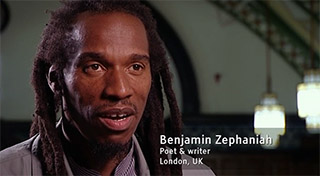
Colin Goh
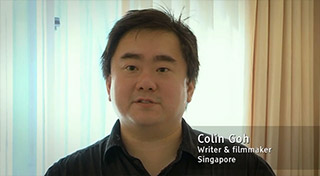
Derek Simpson
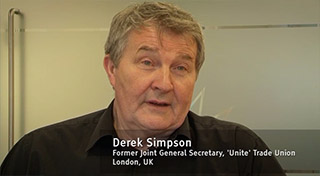
Garth Judd
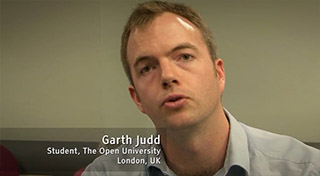
Jennifer Childs
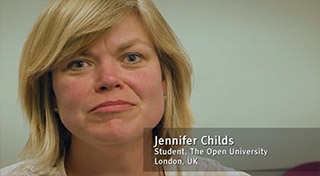
Jung Chang
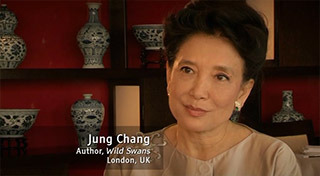
Li Xiang
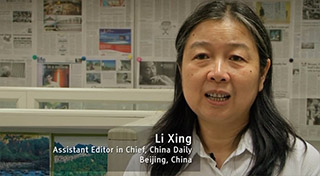
Megumi Inman
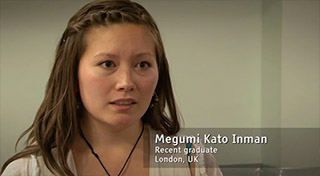
Njabulo Ndebele
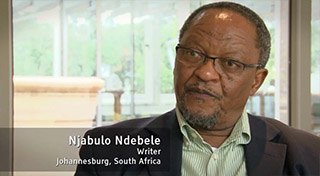
Roline Salomans
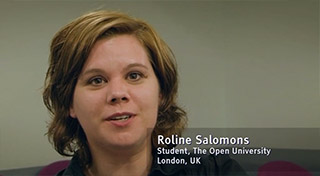
Sindiwe Magona
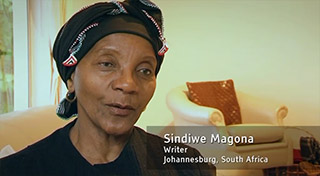
Vatsala Vedantam
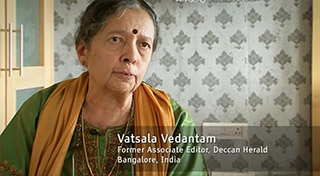
Comment
What is noticeable from all these interviews is that everyone has a slightly different experience of the language and that their attitudes towards it depend on the specific context in which they are using it. Often, as people pass through different stages in their lives – and especially as they move from one place to another – these attitudes will alter, and their own language practices will adapt to their new environment. For all the interviewees, however, English is not only important as a means of communication, but as part of the way they see themselves and how they are perceived by others.
Who speaks English? (Part 4)
So as we can see, the attitudes people have towards the language are a part of their own personal history. But this personal history is always a part of the wider history of the community in which they live. It is often the case that not only is the language of importance to the individual’s sense of identity, but that it also plays a part in the cultural identity of a group or nation. It is within this context that the history of English – and especially the reasons behind its global spread – can be of great significance for the attitudes people have towards the language. In the final activity we will look at the roles played by English in modern-day China, and how attitudes to the language have changed over the past decades as Chinese society has changed.
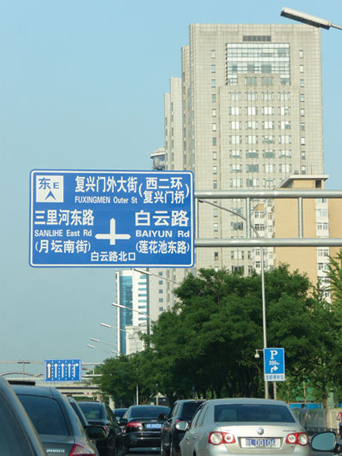
Activity 7
As the most populous nation and, as of 2011, the second largest economy in the world, China is a hugely important player on the world stage today. In recent years, there has been a great boom in learning English. It is estimated that up to 350 million people in China today are learning English – which is a similar number to the total of mother-tongue English speakers (Gu, 2009, p. 28). It is likely, therefore, that what happens in China over the next few decades will have a great impact on the future of the English language. The video below looks at how attitudes to the language have changed with the recent history of China and why it is that people are learning the language.
As you watch the video, consider the following questions.
- Why are so many people learning English in China today?
- How have attitudes to English changed over the last fifty years?
The expansion of English in China
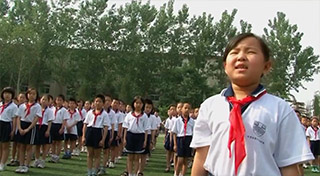
Comment
The video explains how the introduction of a market economy after the death of Mao Zedong brought with it great cultural changes and began a process of opening up the country to the global community. One of the implications of this was an increased interest in English, which was seen not only as a way to communicate with the outside world but also as a means to access information and technical knowledge from the West. In today’s China, English is especially associated in people’s minds with socio-economic development and, with the arrival of multinational companies in the country, this association is becoming ever stronger.
What we can see from examples such as the personal language histories and the role of English in China is that the development of the language is influenced by social forces. Decisions about the language made by institutions such as national governments and education systems have an impact on the form of the language and on the way it is perceived and used. In contexts such as these, English cannot simply be considered a neutral medium of communication; instead it is a politically charged social practice embedded in the histories of the people who use it.
Conclusion
What we have seen in this course is that the English language is and always has been a diverse entity. It has changed dramatically over the centuries since it first arrived on the shores of Britain from the north of Europe, and these changes mean that the language that was spoken at that time is almost incomprehensible to us now. As the language has spread beyond Britain it has continued to change, and to change in different ways in different contexts. It has diversified to such an extent that some scholars suggest that it is no longer accurate to talk of a single ‘English’; that instead there are many different English languages around the world today.
At the same time, however, English exists in the world today as a means of international communication – as a way for people from different social groups to communicate with each other – and to fulfil this function it would seem that variation in the language needs to be curtailed to a certain extent. That is to say, if the language becomes too diverse it will not remain mutually comprehensible across different social groups. So we have two impulses at work that are seemingly incompatible, or perhaps even in conflict, and the question we are faced with is how to render them as consistent, as both being part of the existence of a single entity we call ‘English’. This is one of the central issues in English language studies today – and it’s a very modern issue because it has come about as a direct result of the unprecedented position that English now occupies in the world: as a language with global scope which is implicated in the history and present-day existence of societies all around the world.
References
Acknowledgements
This unit was written by Philip Seargeant.
Except for third party materials and otherwise stated (including all video recordings) (see terms and conditions), this content is made available under a Creative Commons Attribution-NonCommercial-ShareAlike 4.0 Licence.
The material acknowledged below is Proprietary and used under licence (not subject to Creative Commons Licence). Grateful acknowledgement is made to the following:
Course image: Simon Harvey in Flickr made available under Creative Commons Attribution-ShareAlike 2.0 Licence.
Figure 1: © Bodleian Libraries. MS.Laud, Misc 636, fol. 1r;
Figure 2 (map): from Kachru, B.B. (1992) The Other Tongue: English across Cultures (2nd edn), University of Illinois Press. Copyright © 1982, 1992 by the Board of Trustees of the University of Illinois;
Activity 2, Excerpt 1: Gardner, Gail I. (1917) ‘The Sierry Petes’, Orejana Null, SharlotHallMuseum Press Copyright © 1917 Gail I. Gardner/Gardner Family Trust. With kind permission from Gail Steiger;
Activity 2, Excerpt 2: Jamieson, Robert, A., Varg. Permission of the author;
Activity 2, Excerpt 3: ‘Kantoi’ lyrics by Izyan Airahman, P&P Songs;
English Sans French (extract): adapted from The Christian Science Monitor (2003) www.csmonitor.com, March 14 © The Christian Science Monitor;
Figure 4: Manuscript of Summer is icumen in © The British Library Board;
Don't miss out:
If reading this text has inspired you to learn more, you may be interested in joining the millions of people who discover our free learning resources and qualifications by visiting The Open University - www.open.edu/ openlearn/ free-courses
Copyright © 2016 The Open University
